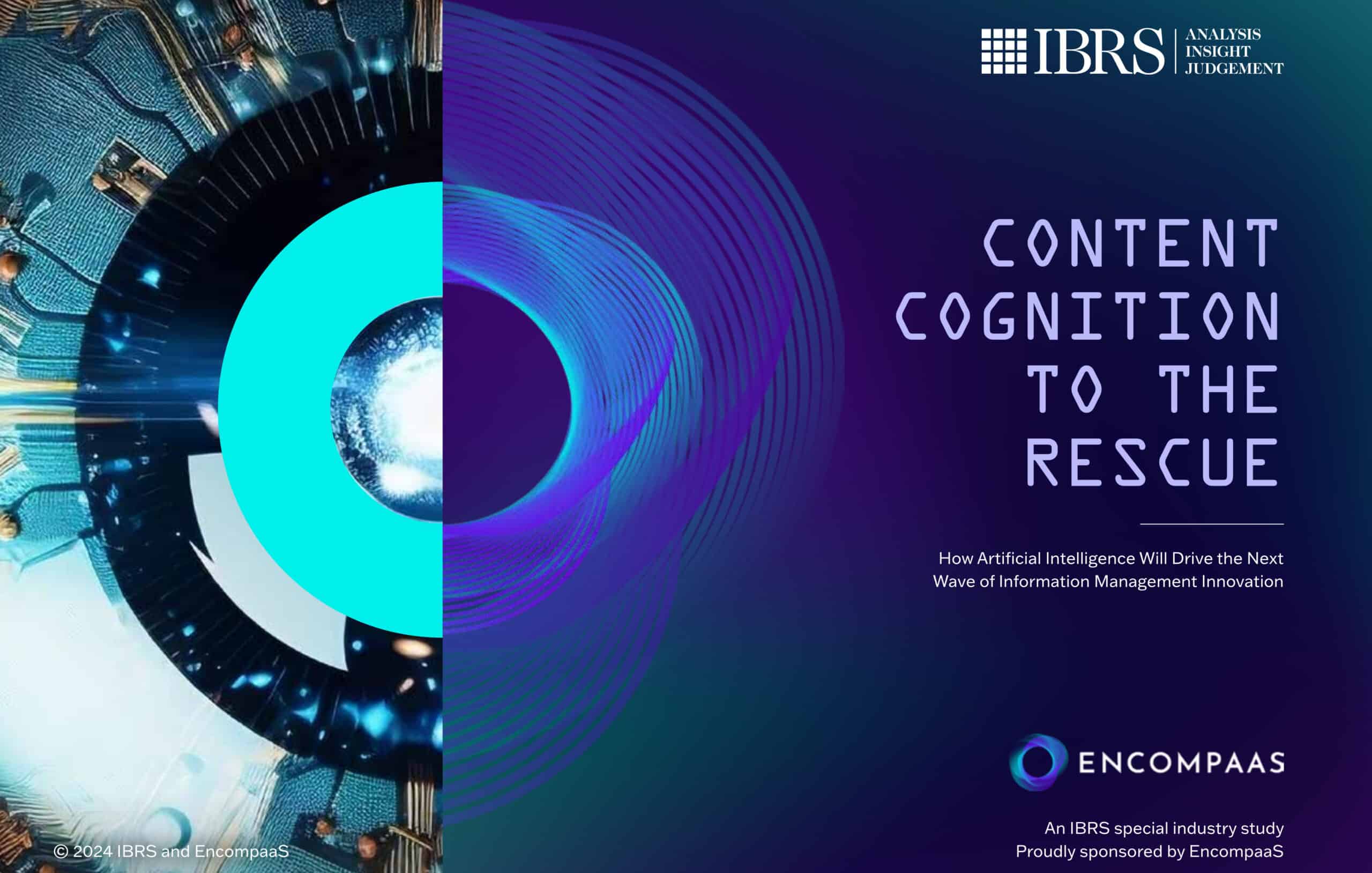Content everywhere: A scalable plan
Authored by Shimron Shimla - Mar 10, 2022

In one sentence, Records Management in Place (RMIP) is traditionally described as Records Management systems that can connect to other Systems of Engagement, to keep your content compliantly managed as mandated, and close any risks or gaps in an integrated and seamless manner for end-users.
Customers adopting RMIP are most commonly seeking to achieve the following:
- Gain visibility into records and manage retention, transfers, holds, and disposition from virtually any system in the business from ONE central place and get a complete and contextual view of all information assets.
- Be able to leverage new tools released to market, without worrying about their native recordkeeping compliance, as mandated by the legislative bodies of the sector or region.
- Decommission systems no longer used, without having to manually copy items into the records corpus for compliance purposes.
Sounds perfect, right?
There are, however, some threats that are emerging in the industry of recordkeeping that are easy to overlook when you first venture into RMIP.
There are also many hidden benefits you have yet to consider or encounter.
If you’re ready to dive in, then let’s start with an example of a fictitious, yet remarkably common scenario:
The Customer invested in an Electronic Document and Records Management System (EDRMS) 10-15 years ago and users were trained to save their content inside. It was a better experience than using file shares which was the other alternative at the time.
It had version control, metadata, search, etc., but file shares were still occasionally used for saving content, including documents.
Over the years, new systems were introduced by the Customer to solve a certain business challenge (CRM systems, ERP systems, HR Information system, several custom-built web applications for both internal and external use, etc.).
Gradually, users started treating the EDRMS as a “final resting ground” for the content they created in other systems. Some documents were converted to PDF and uploaded to the EDRMS by staff members that acknowledge the importance of proper recordkeeping compliance… typically by records managers or members of the Legal team…
Recently, the Customer has procured Microsoft 365, offering more advanced document management and collaboration capabilities (co-authoring, offline access, enterprise search, etc.).
In addition, The Customer now also has access to Purview, allowing them to manage records in place inside M365, classify them, label them, and ultimately dispose of them.
Now, the Customer is looking into a new System of Record to work with Purview, and after spending substantial budgets on maintaining the EDRMS system, decides to take up an evergreen cloud based RMIP system as part of their new IT transformation project! (…sounds familiar??)
So, by now, The Customer’s application portfolio includes at least the following information systems:
- 1 x Traditional EDRM
- 1 x Online SaaS CRM
- 1 x Legacy CRM
- 1 x Online SaaS ERP
- 1 x Legacy ERP
- 3 x Network File Shares (commonly referred to as the “Home” or “H:” drive)
- 2 x Legal Case Management Systems
- 1 x Human Resources Information System
- 3 x Custom / Legacy Web Applications, some with external users’ access
- 1 x Microsoft Office 365 tenant, including:
- 2,000 SharePoint sites
- 10TB in OneDrive for Business storage
- 5,000 Microsoft Teams
- 200 Planner plans
The question is…
WHICH of these systems should the Customer have managed by the new RMIP system?
We know the ideal answer is ALL OF THEM, but priorities, time, and budget stand in the Customer’s way…
So, let’s continue by first understanding where the Customer’s content is.
The following chart is a representation of average content distribution across the customer corpus:

Now, let’s continue by identifying the benefits the Customer wants to realise by using any system/repository:
1. Compliance Levels
Compliance levels can be measured by how information in this system is classified, retained, disposed, and managed compliantly in a way that conforms with legislation and governing bodies regulations.
Your compliance levels are only as high as your least compliant system, as during an audit or an investigation, these will be the systems dragging your overall compliance levels down, despite how compliant all other systems are.
M365 and the EDRMS lead the charge here, but some of the traditional storage systems and line of business systems fall behind.
2. Business Analysis Benefit
Business Analysis benefits can be measured by how easy it is to use data from the system for the purpose of reporting and analytics, based on facts and figures that can be extracted from the content that this system stores.
Your ability to extract insights from your information systems for the purpose of supporting your decision-making process depends on all facts and figures being available, and not providing a skewed or partial view.
3. Discoverability
Discoverability levels are measured by how easy it is to search and find information from this source system, can it be searched by data fields? Or free text? Or both?
The quality of your discovery processes, especially legislation driven ones, is dependent on having access to all information, ideally from one central search interface.
4. Productivity
Productivity gains can be measured by how complementary this system is to the business processes currently followed by the customer.
At times, you might inevitably be forced to pick systems based on the other criteria listed here, at the expense of compromising on business processes alignment and as a result, reducing potential productivity benefits.
5. Cost Efficiency
Cost efficiency is measured by how quickly you can turn up/down your cost of this system, based on its usage at a moment in time.
For example, can it be decommissioned as soon as it is no longer used? Can you remove content from it that is no longer required to maintain or exceed the productivity measures? Can license costs scale up/down based on the tangible benefits this system offers when in use?
Your maximum potential of cost efficiency is only limited by the systems you cannot decommission quickly and without risk.
Keeping such systems for no other benefit other than retention, discovery or business insights is a sunk cost when this information can be used in other ways.
Migration costs to transfer content out of those systems is also considered a sunk cost, as the act of migration does not add any business benefit other than retention, which can be achieved more efficiently.
It is imperative to note that security is intentionally not listed here, as it is the criterion you will not compromise on, for obvious reasons.
So now, let’s have a look at the systems listed above and their respective performance against the measures listed above, in a “Downsides of Content Everywhere” chart:
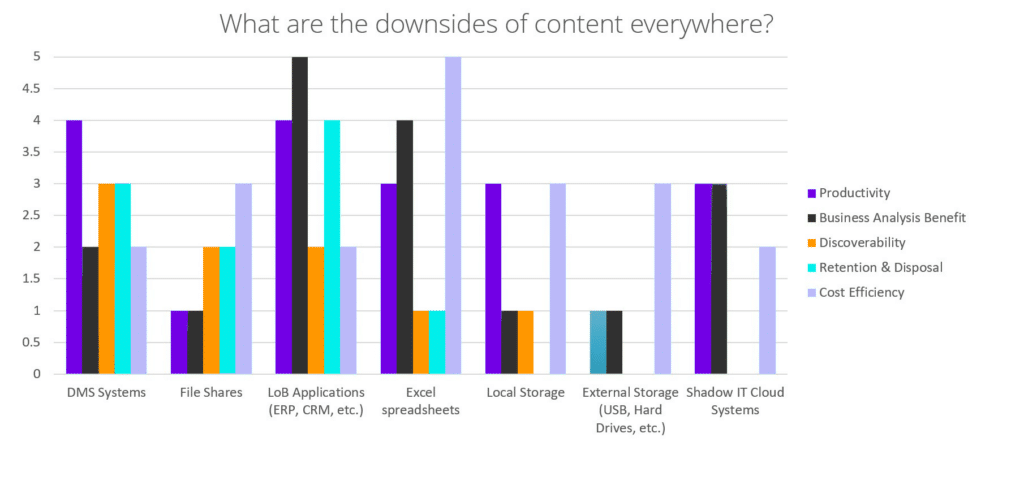
The difficulty involved in assessing solutions based on the 5 measures listed above (6 when you factor security) is high, so there needs to be a way to leverage RMIP solutions to address the compliance levels, business analysis benefit, cost efficiency and discoverability in solutions that do not natively do.
When the Customer succeeds in doing that, their only criterion for selecting products or solutions (other than security of course), is their alignment with their business processes as it pertains to the Customer’s overall productivity benefits.
The chart below help visualise that comparison:
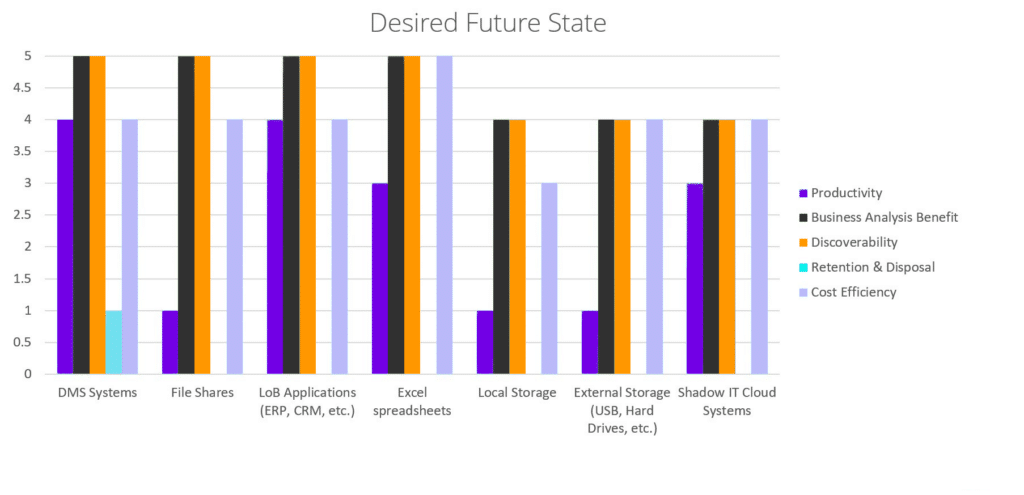
Before:
Other than security, all 5 areas form the criteria that currently informs the Customer’s products / solutions selection.
After:
Other than security, productivity is now the only criterion to inform the Customer’s products / solutions selection.
Now let’s think about the potential of a RMIP system helping the Customer achieve this, a few benefits are listed below, but there are many more to consider:
- Your RMIP system enriches your content on a regular basis, whatever format and wherever it is stored, with metadata values from your business taxonomy, using Machine Learning, Document Cognition, and OpenAI working together.
- Your search experience now covers all your content, including the metadata fields enriched by your RMIP system, metadata that is native to the source system, and free text.
- You can now challenge this new data to provide better business insights and support your decision-making processes.
- Compliance levels for retention and disposal are defined in one place and address content from any system.
- Discovery is comprehensive and identifies source of truth and natively handles redundant duplicates from multiple systems, ideally by grouping duplicate records stored in various systems together.
- There are immediate cost benefits associated with decommissioning systems that are no longer actively used by the business (or have their footprint significantly reduce), because all content is retained compliantly in your RMIP system.
- There is no longer a need for costly migrations for content that is not active or needed for day-to-day operations, your RMIP can not only retain it, but it can also relocate it to another active system as part of a BAU policy.
- “Right tool for the right job” experience, leveraging the best of Purview while not leaving items not designed for M365 behind, still seeing it all centrally from one place.
- You can free up business users time when there is no longer a need to have them take on the responsibility of system administration, only to ensure content is properly retained.
Sounds tempting?
How can you make all this happen for myself and my business?
The EncompaaS platform connects to hundreds of system types, including bespoke ones, without writing a single line of code.
It provides intelligent enrichment using Machine Learning, Large Language Models (including Azure OpenAI, PII Scanners, Document Cognition metadata extraction models, etc. with minimal training and flexible trust thresholds.
It contextually correlates related items from various systems (including duplicate copies) into a collection that can be managed as a single series, without needing to relocate items to the same folder.
It uses all this to help meet various compliance regulations and guidelines more easily, while providing a comprehensive search and discovery experience for all content and its enriched insights.
I am interested in your thoughts on the above, as well as how far down the path your organisation is in achieving these goals and any other goals you see as relevant. Feel free to reach out to me to discuss.

Book a demo
Let's get started
Experience the Power of EncompaaS!
Submit this form to see EncompaaS in action with a demo from our information management experts.
Request a demo today
* indicates required field
By submitting this form, you consent to be contacted by a member of our team by email or phone. You can unsubscribe from our communications at any time via the unsubscribe option in the email received. For more information on how EncompaaS uses your data, please refer to our Privacy Policy.
Related Resources
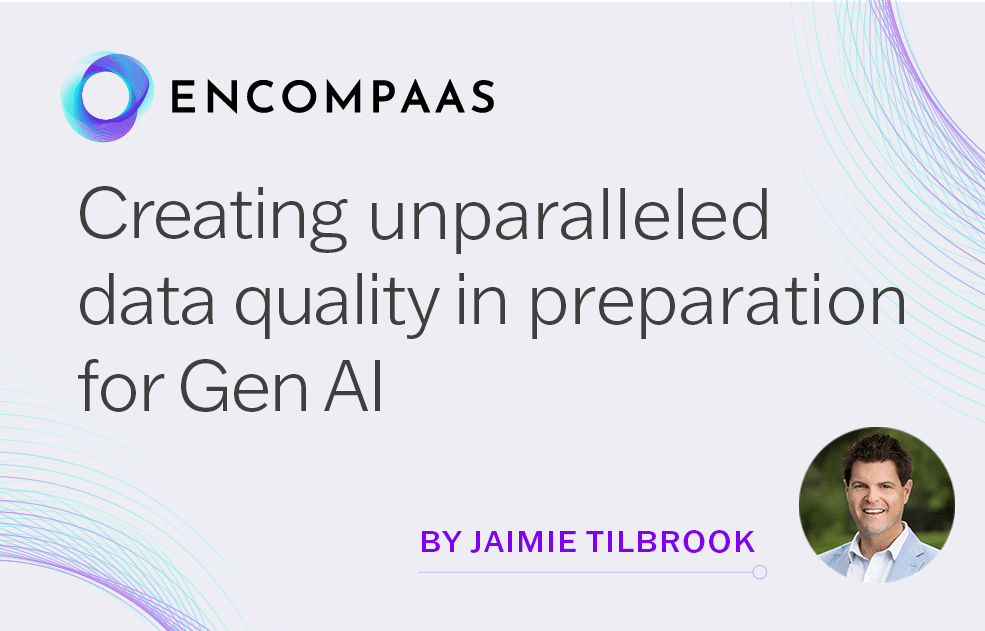
- blog
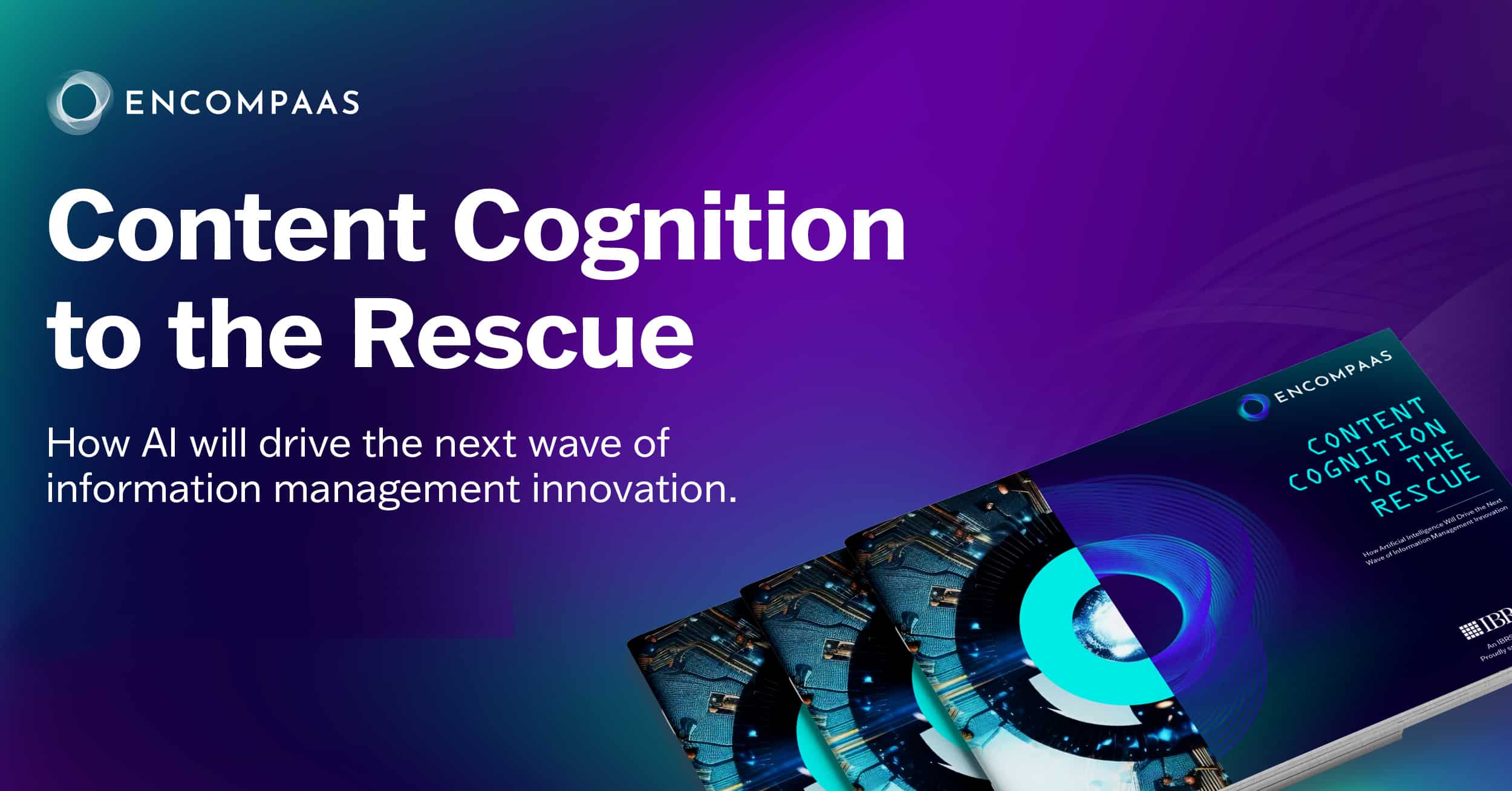
- press
‘Information Hyperinflation’ Challenging Ability of Australian Enterprises to Maintain Privacy and Security Governance, According to New Study
Hundreds of Information Management Professionals Surveyed in IBRS Report Sponsored by EncompaaS Confirm Growing Information Overload; AI-Based Tools Seen as Both Accelerating Problem and as Potential Solution
Learn More


